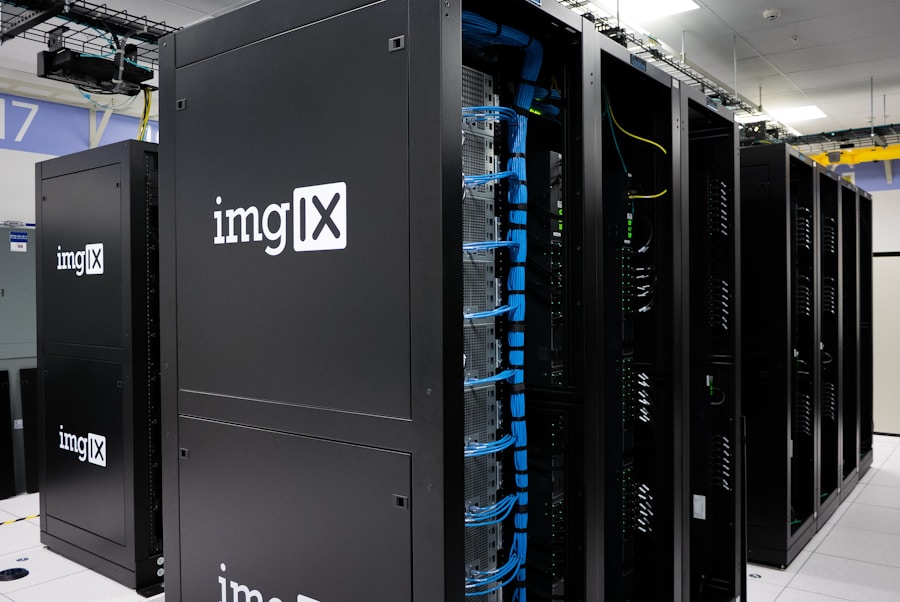
Tailoring Your Backup Service: Customization Tips and Tricks
In today’s digital age, it’s more important than ever to ensure that your data is backed up and protected. Understanding your backup needs is the first step in creating a customized backup plan that meets your specific requirements. Consider the type of data you need to backup, the frequency at which it changes, and the level of protection it requires. For example, if you have important business documents that are constantly being updated, you may need a more frequent backup schedule than if you have personal photos and videos that are only updated occasionally. Additionally, consider the level of security and encryption that is necessary for your data, as well as any compliance requirements that may apply to your industry. By understanding your backup needs, you can create a customized backup plan that provides the right level of protection for your data.
Furthermore, it’s important to consider the potential impact of data loss on your business or personal life. If you were to lose all of your data today, how would it affect you? Understanding the potential consequences of data loss can help you prioritize your backup needs and ensure that you have the right level of protection in place. By taking the time to understand your backup needs, you can create a customized backup plan that provides peace of mind and ensures that your data is always protected.
Customizing Backup Frequency and Schedule
Once you have a clear understanding of your backup needs, it’s time to customize the frequency and schedule of your backups. This involves determining how often your data needs to be backed up and when those backups should occur. For example, if you have data that changes frequently, such as customer orders or financial transactions, you may need to schedule backups to occur multiple times per day. On the other hand, if you have data that changes less frequently, such as personal photos or videos, you may only need to schedule backups to occur once a week or even once a month. By customizing the frequency and schedule of your backups, you can ensure that your data is always up to date and protected.
In addition to customizing the frequency of your backups, it’s also important to consider the timing of those backups. For example, if you have a large amount of data to backup, you may want to schedule backups to occur during off-peak hours to minimize the impact on your network and system performance. Similarly, if you have data that is critical to your business operations, you may want to schedule backups to occur during times when that data is not being actively accessed. By customizing the schedule of your backups, you can ensure that they occur at times that are convenient for you and minimize any potential disruptions to your daily activities.
Selecting Specific Files and Folders for Backup
In addition to customizing the frequency and schedule of your backups, it’s also important to select specific files and folders for backup. This involves identifying the data that is most important to you and ensuring that it is included in your backup plan. For example, if you have important business documents stored in a specific folder on your computer, you will want to ensure that this folder is included in your backup plan. Similarly, if you have personal photos and videos stored in a specific location, you will want to ensure that this data is also included in your backup plan. By selecting specific files and folders for backup, you can ensure that the most important data is always protected.
Furthermore, selecting specific files and folders for backup allows you to customize the level of protection for different types of data. For example, you may want to create separate backup plans for different types of data, such as business documents, personal photos, and financial records. This allows you to apply different retention settings and encryption levels to each type of data, ensuring that each type of data receives the appropriate level of protection. By selecting specific files and folders for backup, you can create a customized backup plan that meets the unique needs of your data.
Utilizing Versioning and Retention Settings
Another important aspect of customizing your backup plan is utilizing versioning and retention settings. Versioning allows you to keep multiple versions of a file over time, which can be useful if you need to access previous versions of a document or recover from accidental changes or deletions. Retention settings allow you to specify how long backups should be kept before they are automatically deleted, which can help you manage storage costs and comply with data retention policies. By utilizing versioning and retention settings, you can create a customized backup plan that meets your specific needs.
For example, if you have important business documents that are constantly being updated, you may want to enable versioning to keep multiple versions of those documents over time. This can provide added protection against accidental changes or deletions and ensure that you always have access to previous versions of those documents if needed. Similarly, if you have personal photos and videos that are only updated occasionally, you may want to set shorter retention periods for those backups to minimize storage costs and ensure that you are not keeping unnecessary copies of outdated data. By utilizing versioning and retention settings, you can create a customized backup plan that provides the right level of protection for your data while also managing storage costs effectively.
Integrating with Other Services and Platforms
In addition to customizing the frequency, schedule, and content of your backups, it’s also important to consider how your backup plan integrates with other services and platforms. For example, if you use cloud storage services such as Google Drive or Dropbox, you may want to ensure that your backups are automatically synced with those services to provide an additional layer of protection for your data. Similarly, if you use specific software applications or platforms for your business operations, you may want to ensure that your backups are compatible with those platforms to ensure seamless recovery in the event of data loss.
Furthermore, integrating your backup plan with other services and platforms can provide added convenience and flexibility. For example, by syncing your backups with cloud storage services, you can access your data from anywhere and easily recover from any device in the event of data loss. Similarly, by ensuring compatibility with specific software applications or platforms, you can minimize downtime and ensure that your business operations can continue uninterrupted in the event of a data loss. By integrating your backup plan with other services and platforms, you can create a customized backup solution that meets all of your specific needs.
Managing Backup Storage and Costs
As part of customizing your backup plan, it’s important to consider how you will manage backup storage and costs. This involves determining how much storage space is needed for your backups, as well as how much it will cost to maintain that storage over time. For example, if you have a large amount of data to backup, you may need to invest in additional storage space or consider using more cost-effective storage solutions such as cloud storage services. Similarly, if you have strict budget constraints, you may need to carefully manage storage costs and consider options such as compression or deduplication to minimize the amount of storage space required for your backups.
Furthermore, managing backup storage and costs involves regularly reviewing and optimizing your backup plan to ensure that it remains cost-effective over time. This may involve periodically purging outdated or unnecessary backups, adjusting retention settings to minimize storage costs, or exploring alternative storage solutions that offer better value for money. By actively managing backup storage and costs, you can ensure that your customized backup plan remains affordable and sustainable over the long term.
Automating and Monitoring Customized Backup Settings
Finally, once you have customized your backup plan to meet all of your specific needs, it’s important to automate and monitor those settings to ensure that they remain effective over time. Automation allows you to schedule backups to occur automatically without manual intervention, ensuring that your data is always protected without requiring constant oversight. Monitoring allows you to track the performance of your backups and identify any issues or potential improvements that may be needed.
For example, by automating your backup settings, you can ensure that backups occur at regular intervals without needing to remember to initiate them manually. This provides added peace of mind and ensures that your data is always protected even if you are not actively monitoring the process. Similarly, by monitoring the performance of your backups, you can identify any potential issues such as failed backups or insufficient storage space before they become critical problems. This allows you to proactively address any issues and ensure that your customized backup plan remains effective over time.
In conclusion, creating a customized backup plan involves understanding your specific needs, customizing the frequency and schedule of backups, selecting specific files and folders for backup, utilizing versioning and retention settings, integrating with other services and platforms, managing backup storage and costs, and automating and monitoring those settings. By taking the time to customize your backup plan in this way, you can ensure that your data is always protected in a way that meets all of your unique requirements. Whether it’s personal photos and videos or critical business documents, a customized backup plan provides peace of mind and ensures that your data is always safe and secure.


